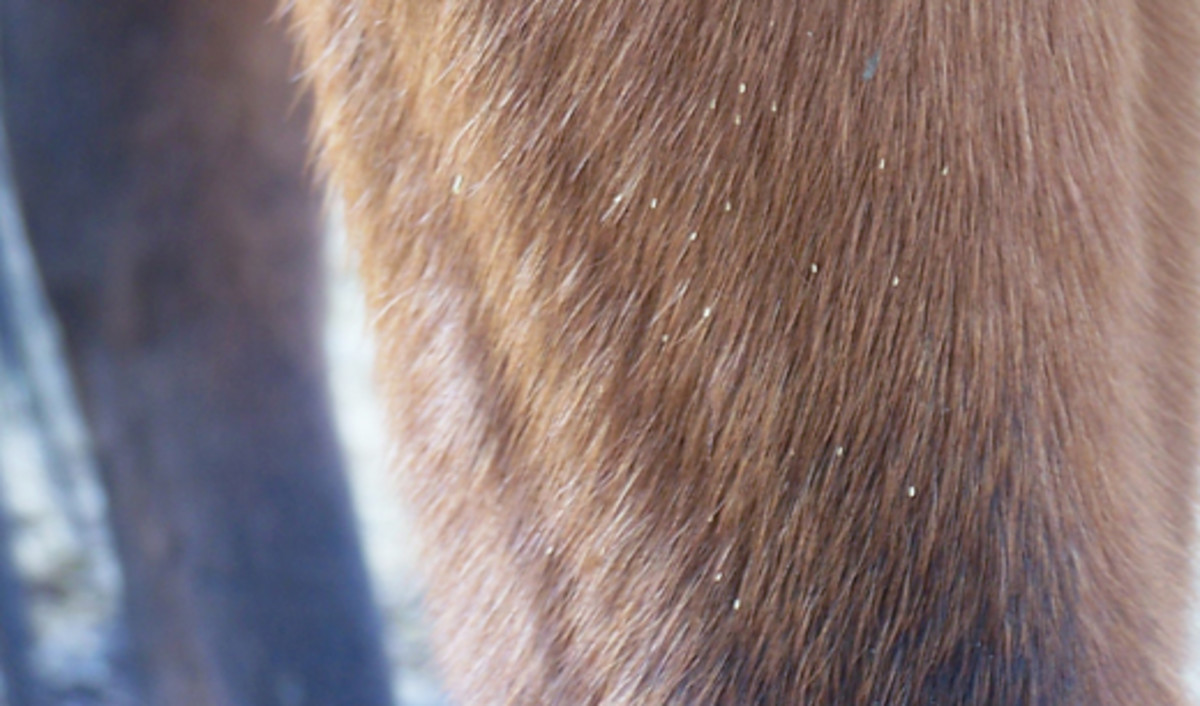I was recently reflecting on a couple of changes in problems affecting horses that I’ve observed over the last 40 years. In the first decade of practice after graduating from vet school in 1962-hey, I was only 24 years old-I’d see a case of clinical tetanus in a horse at least once a year, and by late summer all horses had bot eggs on the hair of their front legs. I haven’t seen a case of tetanus in a horse for over 20 years and, at least in my area on California’s Central Coast, I don’t see bot eggs on horses anymore.
In my opinion, the reason for not seeing horses afflicted with tetanus is the nearly universal use of tetanus toxoid vaccine. This vaccine seems to be 100-percent effective in protecting horses from the tetanus toxin produced by the bacteria clostridium tetani.

This bacteria is very common in the environment of horses, and can be a common contaminate in puncture wounds or devitalized tissue where no air gets to the wound. It produces a toxin that attaches to the neuromuscular junctions of the entire body, causing uncontrollable spastic rigidity. There is no specific antidote, and a high percentage of horses die from the problem.
In my early days of veterinary practice, it was considered necessary to give every horse with a wound, whether traumatic or surgical, a dose of tetanus antitoxin. This product is 1 or 2 cc’s of serum from a hyper-immunized horse. It supposedly gave immediate protection, but only lasted a couple of weeks.
This product is no longer necessary and, in my opinion, should not be used because of the threat of severe liver disease occasionally seen six weeks or so after its administration to adult horses. Tetanus toxoid probably doesn’t have to be given every year, but I’ve seen no problems in administering it in combination with the viral-disease vaccines, i.e., Sleeping Sickness, Flu, West Nile, etc.
When I was first out of vet school, we were dosing horses with carbon disulfide via nasogastric tube to kill stomach bots. This procedure was done in late fall or winter, when the stomach bot was actually in the horse’s stomach. This product was probably not very effective, caused transient colic to the horse and was terribly noxious to handle and administer.
Then came the organophosphate drugs to kill bots. They were slightly less toxic, and easier to administer. About 25 years ago, Ivermectin came on the market, and I believe that’s when we started really controlling the stomach-bot problem. Ivermectin was originally introduced as an intramuscularly administered dewormer. There were significant negative side effects to this route of administration in some horses, and now it is routinely given as a paste or oral drench.
There are other boticides on the market now that are also very effective. The point to remember is to use one of these products in the wintertime on your horse, as that’s when bot larvae are in the horse’s stomach. Bot larvae that survive are passed in the feces in the springtime, and hatch into the botfly that lays the little yellow eggs on the horse’s hair in the summertime.
So, the good news is, we can control these two problems in horses now with products that are relatively inexpensive, very effective and have no significant negative side effects.










